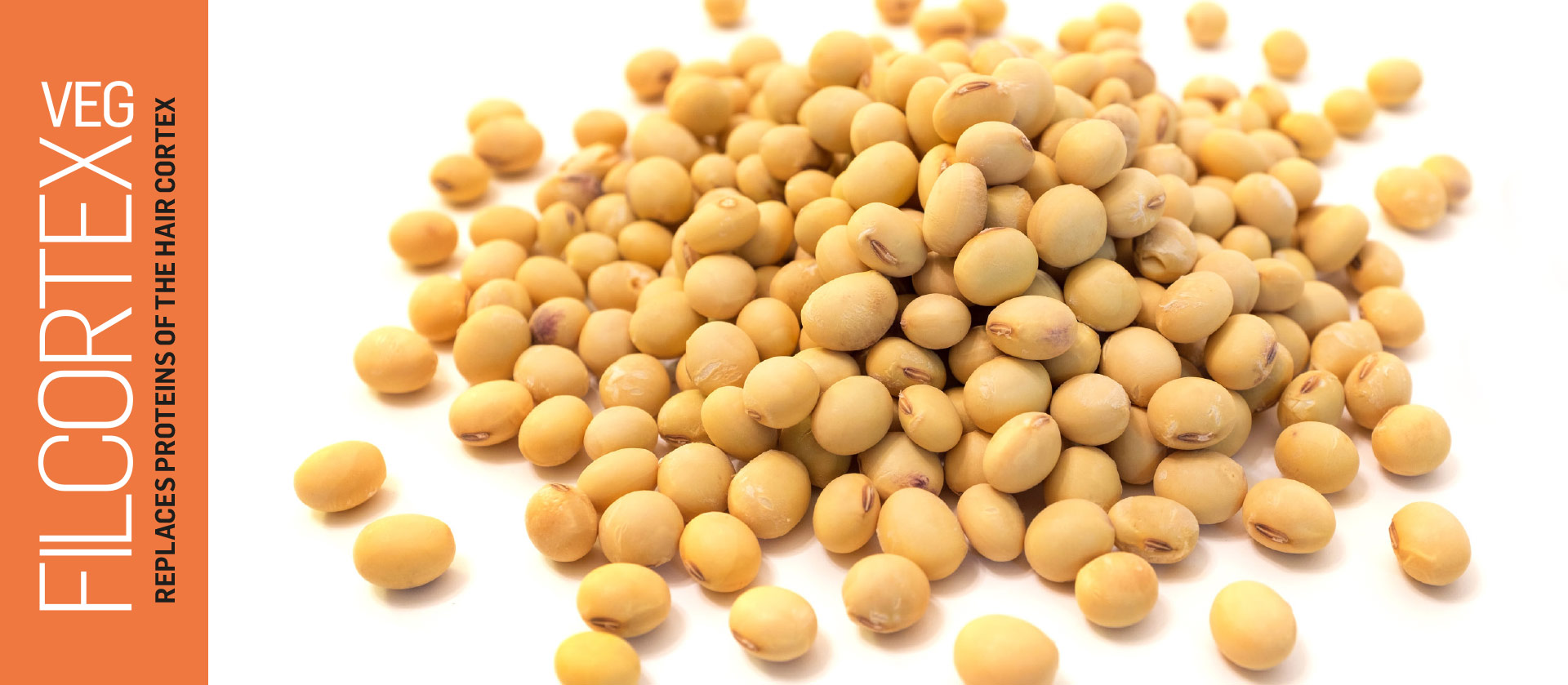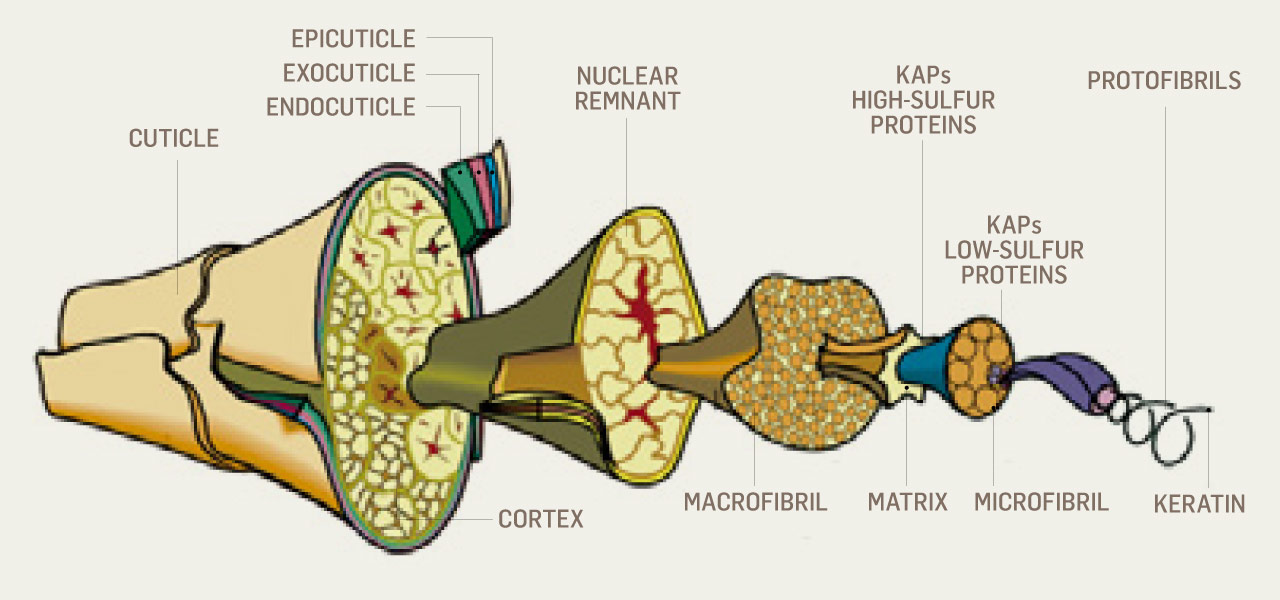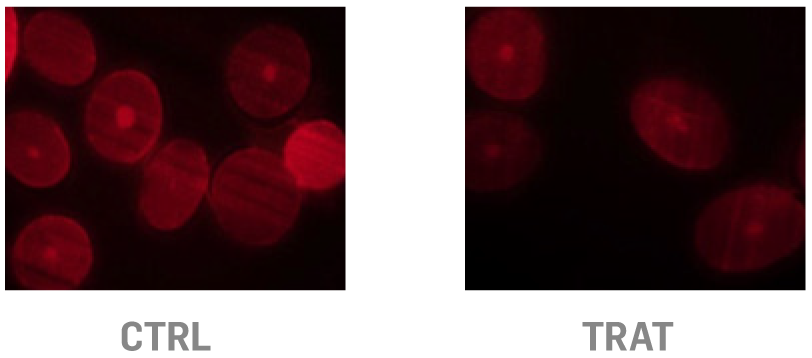
Filcortex VEG
FILCORTEX VEG is the result of the association of hair proteomics with biocomputing tools and associates the amino acids of the HGT KAPs with an exclusive Cuticle Interlock System – CIS which seals the amino acids into the hair fiber, increasing hair mass and reinforcing its structure.
FILCORTEX VEG replaces proteins of the hair cortex, repairs brittle and damaged hair, replaces hair mass and acts as a thermal protector of hair fiber.
INCI Name
Aqua, Kappaphycus Alvarezii Extract, Laminaria Saccharina Extract, Hydrolyzed Rice Bran Protein, Hydrolyzed Soy Protein, Glycine, Sodium Benzoate, Potassium Sorbate
HAIR Properties
Proteins, lipids and minerals
Recent findings, based on highly sensitive proteo- mic analytical tools, show that human KIFs (Keratin Intermediate Filaments) are composed of acid (type I) and neutral (type II) keratins, organized in bundles: each keratin forms structures in the form of a spiral α-helix twisted in pairs that form larger structures known as Protofibrils.
Those, in turn, are organized in groups of four Protofibrils, forming structures further reinforced known as Fibrils. The empty spaces of these complex structures are filled with proteins, known generically as Keratin Associated Proteins, or KAPs.
KAPS
Keratin associated proteins
Two groups of proteins, generally called High Sulfur KAPs, present large amounts of sulfur containing amino acids and form crosslinks with keratin fibrils, being the main responsible for the structural strength of the hair fibers. A third group is composed of Low Sulfur KAPs and is known as the HGT group. Kaps of this group does not form crosslinks with the fibrils and act as a filling material between macrofibrils, adding flexibility and resistance to fibers.
Since they are not chemically bound to macrofibrils, the KAPs of the HGT group are less resistant than the High Sulfur KAPs and therefore are the first proteins to be damaged and removed by chemical or physical treatments of the fibers, causing a decrease in the cohesion between the proteins of the matrix, leading to the fragility of the hair fibers.
Hair fiber

Prevention of split ends
- Filcortex VEG is 3.3 times better in the prevention of the appearance of split ends than a benchmark leave-on product with silicone.
- Filcortex VEG is 4 times better in the prevention of the appearance of split ends than a placebo formula.
Increase in hair diameter
Hair treated with a mask containing 0.5% Filcortex VEG showed an increase in hair diameter of 21.31% compared to placebo. With 0.8% the increase was 23%.
Proof
Tresses submitted to one treatment cycle TRAT (shampoo+conditioner+mask) showed significantly lower cortical fluorescence intensity (1.9 times) in relation to strands in CTRL treatment. When a product with high substantivity is applied to hair, there is a connection between the active ingredients and damaged hair sites and thus the number of sites available for binding to the marker dye is reduced. Consequently, the fluorescence intensity is lower.
THERMAL PROTECTION OF THE HAIR FIBER
The enthalpy necessary for the denatura- tion of α-keratin in hair treated with the products containing Filcortex increased by 62% after the first cycle. The treatment with Shampoo/Conditioner/Treatment cream/DD Cream with Filcortex, followed by drying and aligning (flat iron) was effective in protecting hair from heat damage.
Overlapping of the DSC curves

The background noise observed at the end of the thermograms indicates the degradation of hair keratin.





